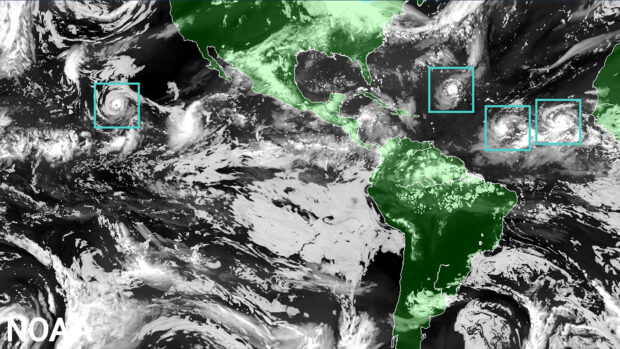A new hurricane model released last month by NOAA’s National Hurricane Center, a division of the National Weather Service, has proved better at predicting rapid intensification.
The Hurricane Analysis and Forecast System (HAFS) became operational on June 27 and will run alongside existing models for the 2023 season, before replacing them as NOAA’s main hurricane forecasting model.
“The quick deployment of HAFS marks a milestone in NOAA’s commitment to advancing our hurricane forecasting capabilities and ensuring continued improvement of services to the American public,” said NOAA Administrator Rick Spinrad, Ph.D. “Development, testing and evaluations were jointly carried out between scientists at NOAA Research and the National Weather Service, marking a seamless transition from development to operations.”
The experimental version of HAFS showed a 10-15 percent improvement in track predictions compared to NOAA’s existing hurricane models, the agency reported.
The latest model is as good as the agency’s existing hurricane models when forecasting storm intensity but is better at predicting rapid intensification.
According to NOAA, HAFS was the first model last year to accurately predict Hurricane Ian would undergo a second rapid intensification as the storm moved off the coast of Cuba and toward southwest Florida.
Over the next four years, HAFS will receive several upgrades.
An objective of the NOAA Hurricane Forecast Improvement Program (HFIP) is that by 2027, all model forecast errors will be reduced by nearly half compared to errors seen in 2017.
“With the introduction of the HAFS forecast model into our suite of tropical forecasting tools, our forecasters are better equipped than ever to safeguard lives and property with enhanced accuracy and timely warnings,” said Ken Graham, director of NOAA’s National Weather Service. “HAFS is the result of strong collaborative efforts throughout the science community and marks significant progress in hurricane prediction.”
HAFS is also the first new major forecast model implementation using NOAA’s updated weather and climate supercomputers, which were installed last summer.
HAFS was jointly created by NOAA’s National Weather Service Environmental Modeling Center, Atlantic Oceanographic & Meteorological Laboratory and NOAA’s Cooperative Institute for Marine & Atmospheric Studies.





















 Aon Adds to List of Brokers Suing Howden US for Alleged Poaching, Theft
Aon Adds to List of Brokers Suing Howden US for Alleged Poaching, Theft  Artificial Intelligence Is Rewriting the Rules for Commercial Lines
Artificial Intelligence Is Rewriting the Rules for Commercial Lines  AIG Partners With Amwins, Blackstone to Launch Lloyd’s Syndicate Using Palantir
AIG Partners With Amwins, Blackstone to Launch Lloyd’s Syndicate Using Palantir  Why Insurance Telematics Integrations Fail
Why Insurance Telematics Integrations Fail 



